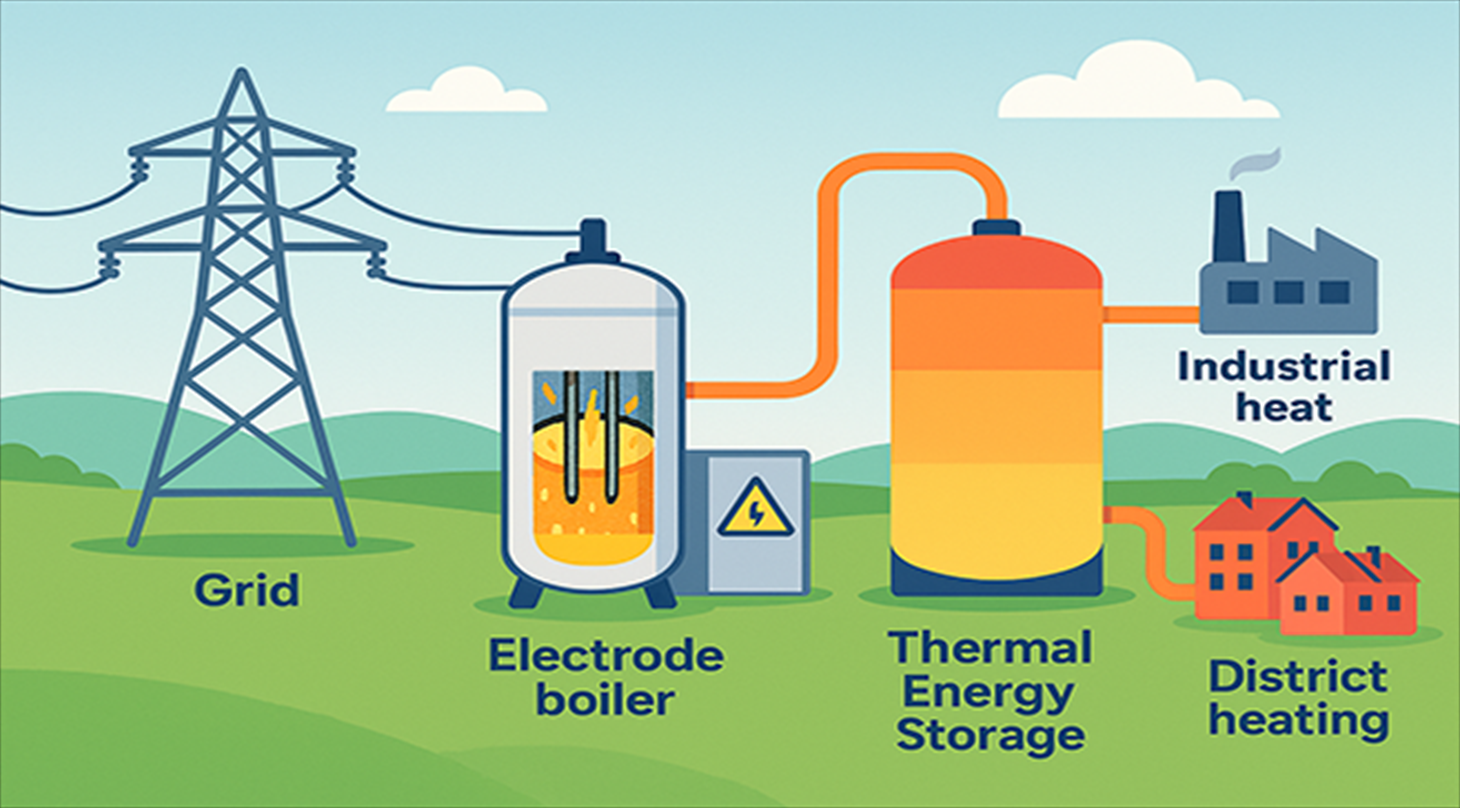
HELT: High voltage ELectrode heating for Thermal storages
Thermal Energy Storage (TES) addresses a key bottleneck in the decarbonization of heat consumption. Current TES systems rely on low-voltage electric heaters, which require expensive and space-consuming transformers. The HELT project’s primary aim is to develop and demonstrate a prototype electrode boiler capable of operating at high voltage.
The project aims to develop and demonstrate a new type of electrode heater that can be connected directly to the high-voltage grid. This represents a groundbreaking solution for large-scale thermal energy storage, making it cheaper and easier to integrate sustainable heat into industry and district heating.
Background and challenge
Denmark and the rest of Europe are actively working towards transitioning to renewable energy. One of the greatest challenges is how to store large amounts of green energy during periods of overproduction efficiently so that it can be used when heat is needed – both in households and in industry. Thermal energy storage plays a key role here, as it can store heat at lower costs than, for example, batteries or hydrogen storages.
Currently, the technology is limited by the fact that electric heaters for TES are only available in low-voltage versions. When such heaters need to handle large quantities of energy (>500 MWh), expensive and space-consuming transformers are required to convert the high voltage from the grid down to low voltage. This increases both complexity and cost, making it difficult to scale up TES systems.
Our solution
In this project, we will develop a prototype electrode heater that:
- can operate directly on medium and high voltage from the electricity grid.
- operates on the electrode boiler principle, whereby heat is produced in a conductive liquid via an electric field.
- can heat medias such as sulfur and other liquids capable of withstanding very high temperatures (well above the boiling point of water).
- can be tested and scaled up for both industrial facilities and large district heating plants.
By using high voltage, we can avoid the need for expensive transformers, reduce installation times, and make it easier for new facilities to connect to the grid. This means faster and more cost-effective solutions for both businesses and utility companies.
Project activities
- Development, design, and construction of the prototype.
- Testing and validation with various conductive liquids.
- Performance testing of system efficiency and capacity.
- Preparation of a roadmap for making the technology ready for the market.
About the project team
The project, which will run over two years (starting in September 2025), is a collaboration between Danish Technological Institute (project lead) and the Danish company Heliac.
Heliac conducts research and development in science and engineering within the fields of solar energy and thermal energy storage. The company has a strong foundation in designing and optimizing energy storage systems for industrial and district heating applications. Heliac’s responsibilities include the design and construction of the prototype heater and development of the high-voltage systems, electrodes and safety mechanisms.
DTI specializes in advanced laboratory testing, measurement systems, and performance analysis for energy systems, including TES and electrification technologies. DTI’s project responsibilities include testing the prototype in laboratory conditions, building and operating advanced measurement and data acquisition systems for prototype validation, and facilitating collaboration with relevant stakeholders.
The project receives funding from EUDP.
